This loaf of soft sourdough French bread contains no yeast, and has that delicious tang from sourdough!
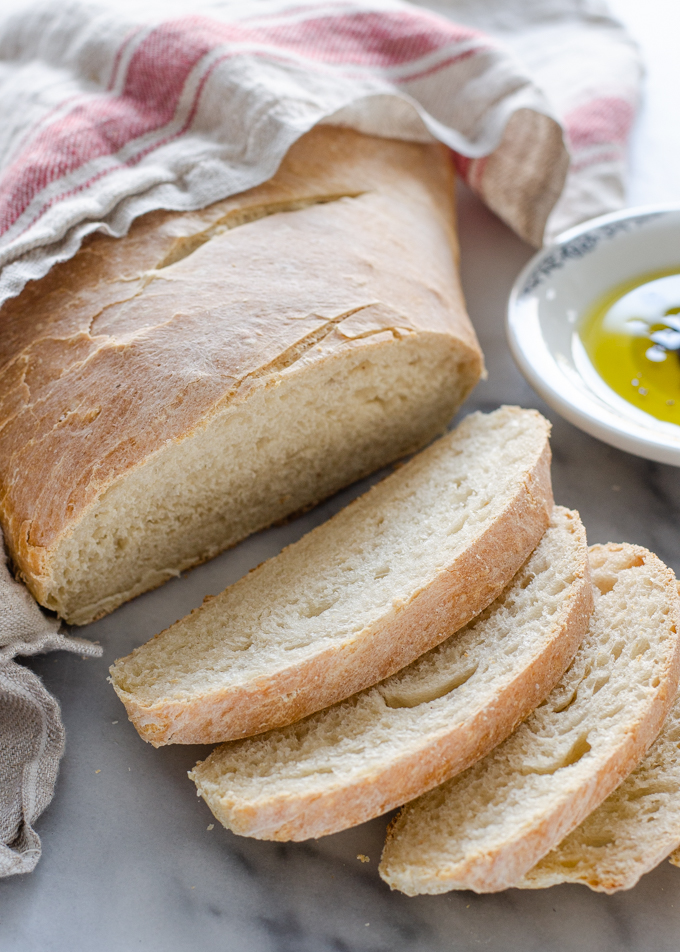
This loaf came about because of a lack of good sourdough French bread recipes on the internet.
My birthday was coming up, and I decided that what I wanted most was to have a bruschetta potluck. I would provide the bread and we all would bring toppings!
Of course I wanted to make sourdough for the bread. But a search of the internet brought up no reliable soft sourdough French bread recipes that had no yeast. So I decided to write my own recipe! It turned out beautifully the first time.
And that’s how this sourdough French bread was born! Let’s get to making it…
How to Make Soft Sourdough French Bread
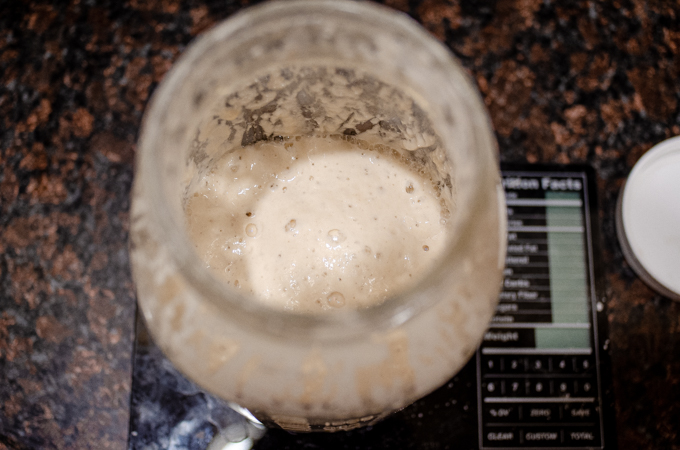
Of course you need to start with an active sourdough starter. An active starter is one that’s been fed 8-12 hours previously, has doubled in bulk, and is bubbly and sour.
Make sure to check out my How to Make Sourdough Starter tutorial over on The Pioneer Woman’s blog if you’re new to sourdough.
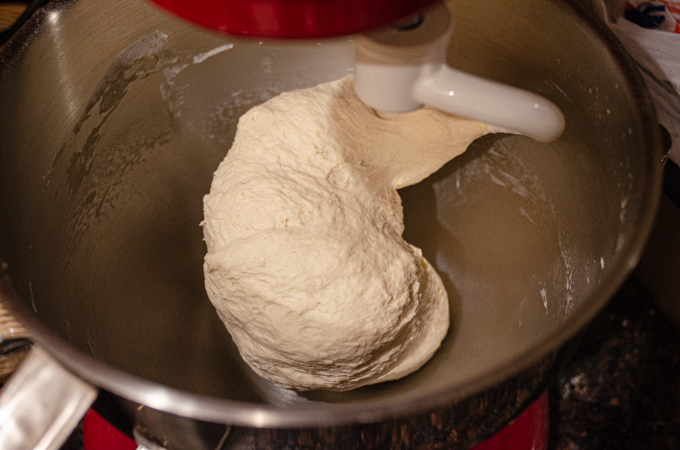
Place all of the dough ingredients in the bowl of a stand mixer fitted with a dough hook. The key to soft sourdough French bread is to get the hydration of the dough right. You want it to be really soft, and almost tacky. Definitely lean more towards a wet dough than a dry one! Knead for 15 minutes on medium-low speed (I set my mixer to 2/10).
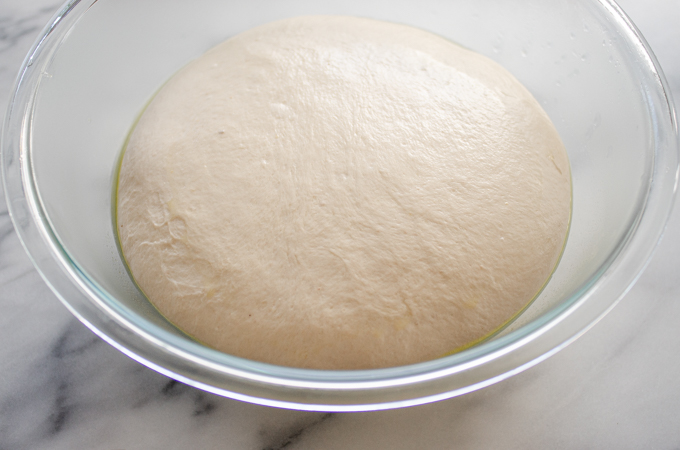
Place in a well oiled bowl and allow to rise at room temperature until doubled, about 8-12 hours.
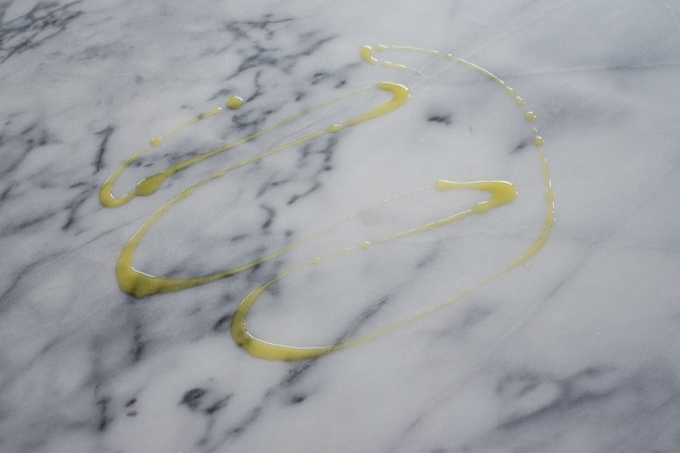
Grease your work surface.
How to Form Soft Sourdough French Bread
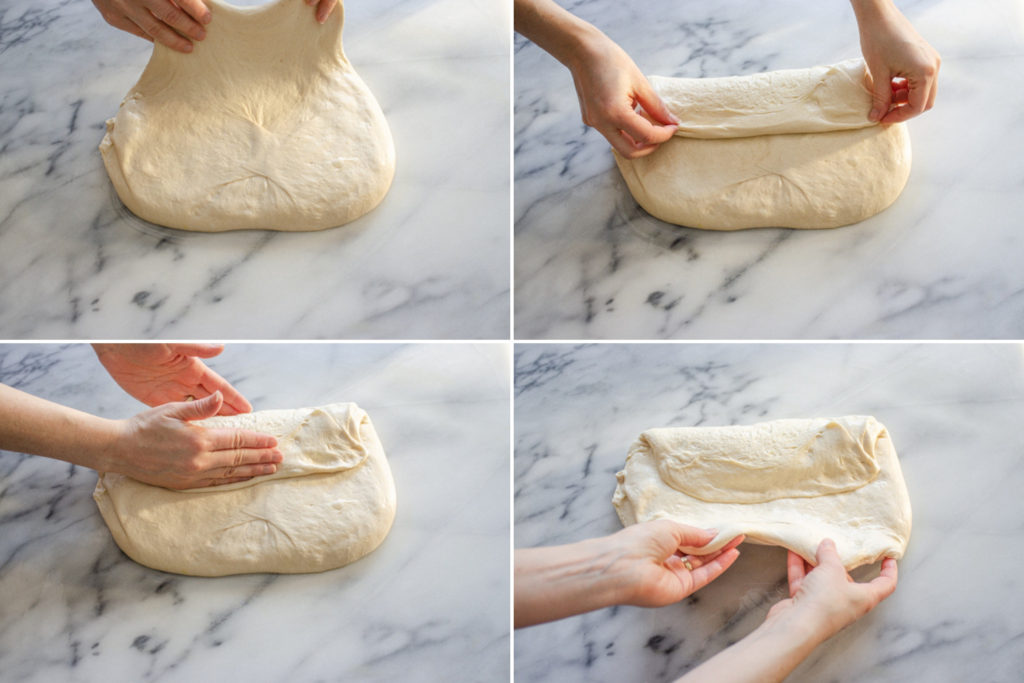
Plop the dough out onto the work surface. Working with greased hands, form the dough:
1) Grab the top edge of the dough, stretch it upwards…
2)…and fold it over to the middle of the dough.
3) Using the side of your hand, press the edge of the fold in place.
4) Grab the close edge of the dough…
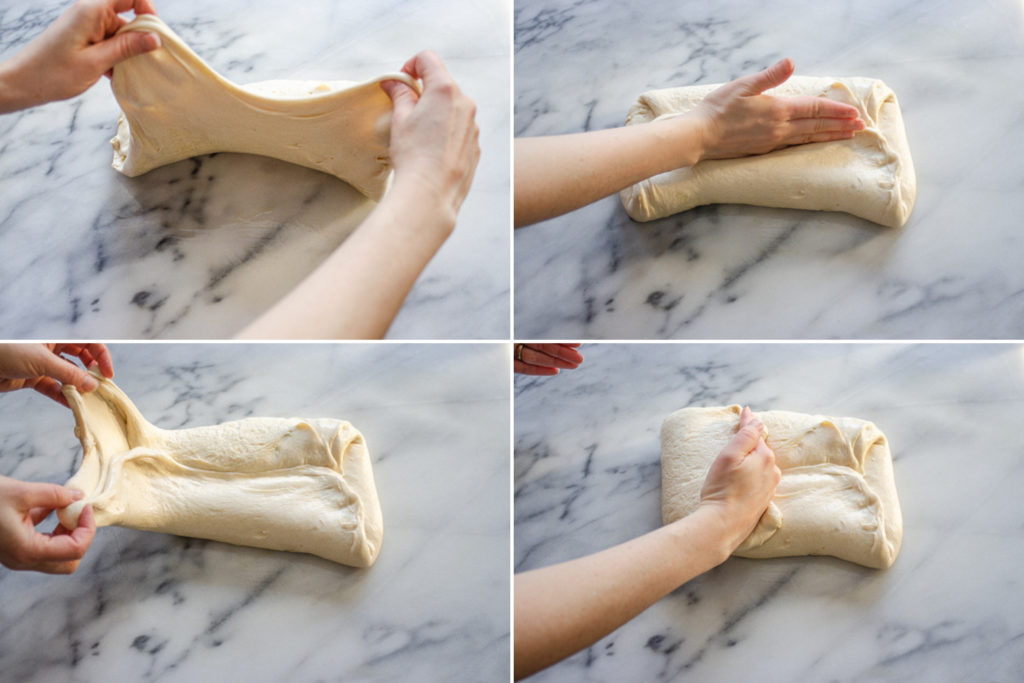
5)…stretch it out…
6)…and fold it over the middle of the dough. Using the side of your hand, press the edge of the fold in place.
7 and 8: Repeat with the left edge of the dough.
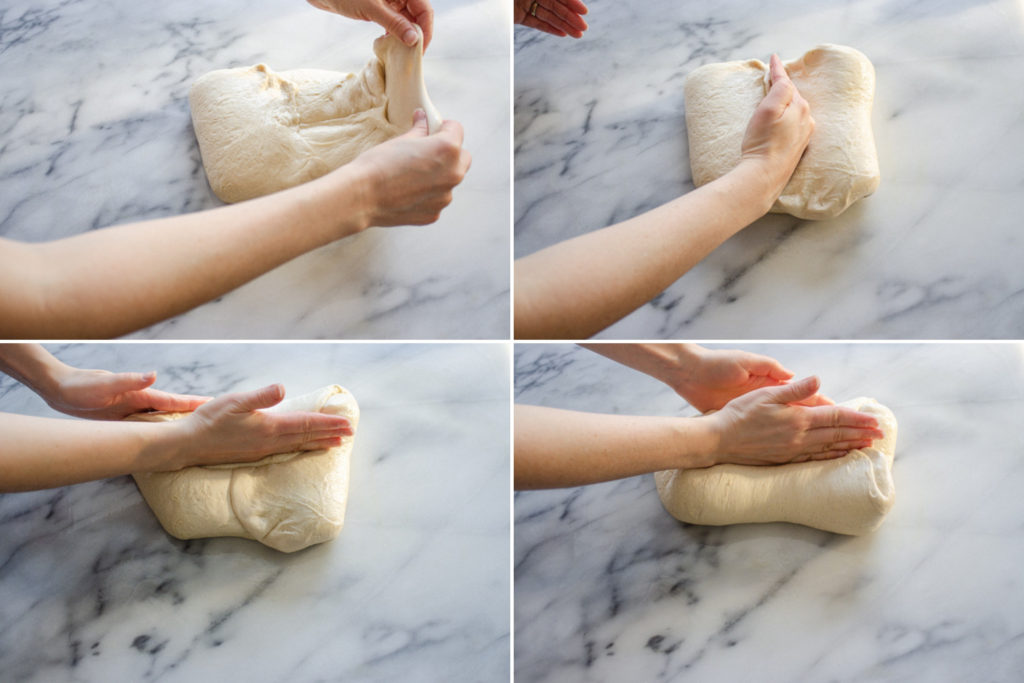
9 and 10: Repeat with the right edge of the dough.
11 and 12: Repeat once more with the top and bottom edges.
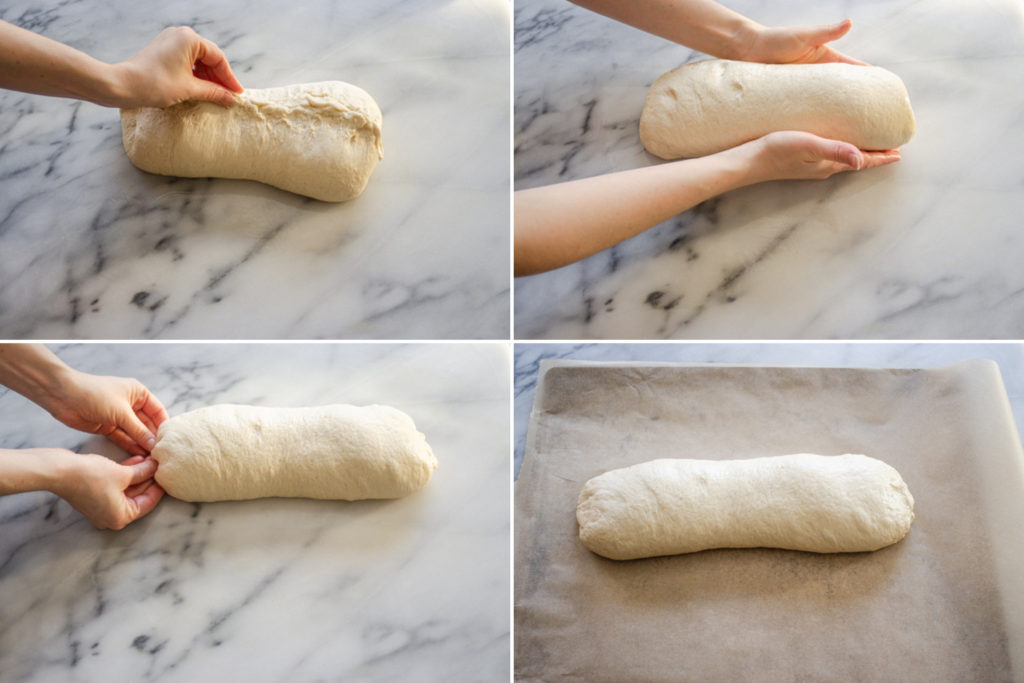
13) Pinch the seam to seal it.
14) Flip the loaf over and use your hands to stretch the dough under itself to build more surface tension.
15) Pinch the ends of the dough to seal.
16) Place on a parchment lined baking sheet.
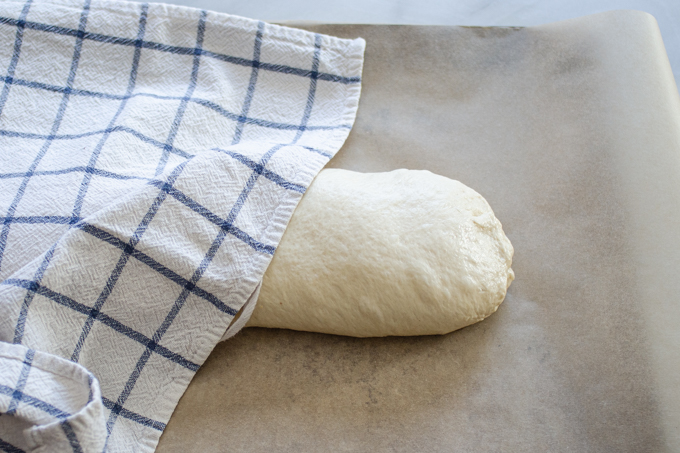
Cover with a tea towel and leave in a warm spot to double. This can take anywhere from 4 to 8 hours, depending on how warm your kitchen is.
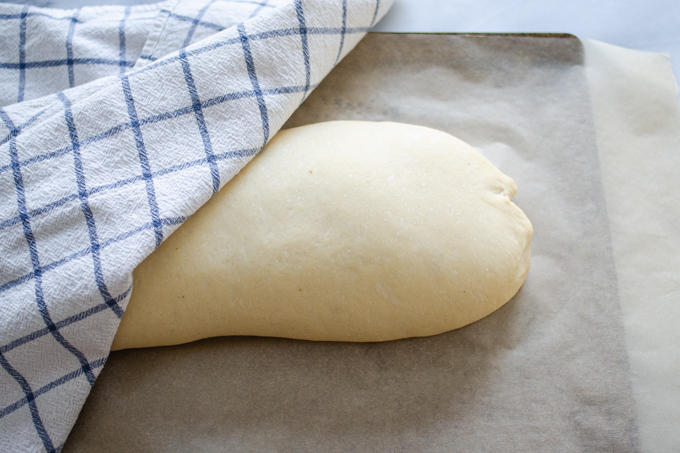
Here’s what the loaf should look like once it’s nicely risen.
Scoring and Baking
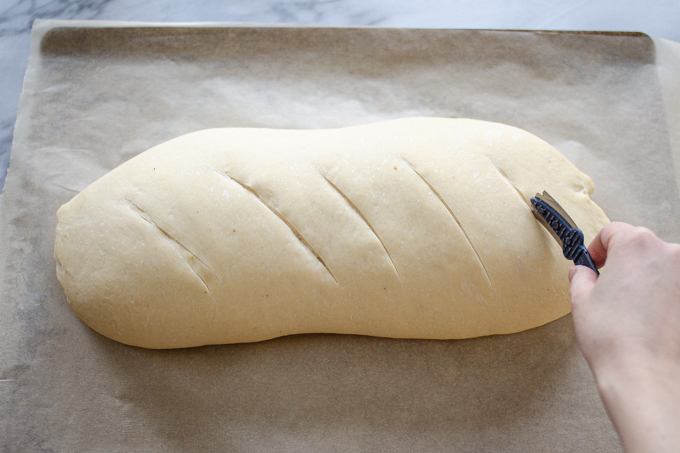
Score the dough with a razor blade, lame, or serrated knife.
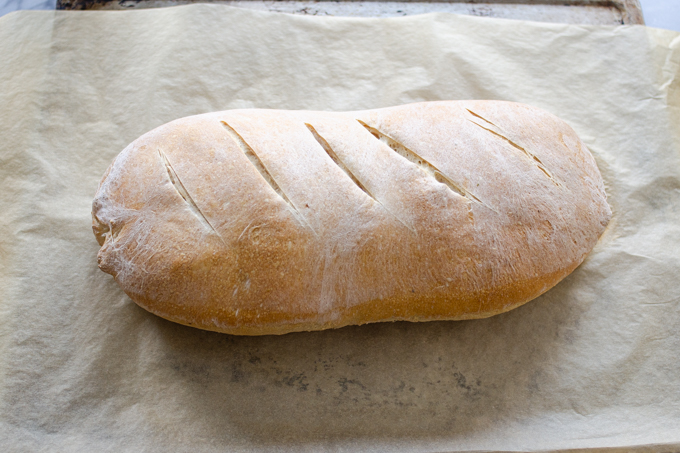
Bake in a 450° oven until golden.
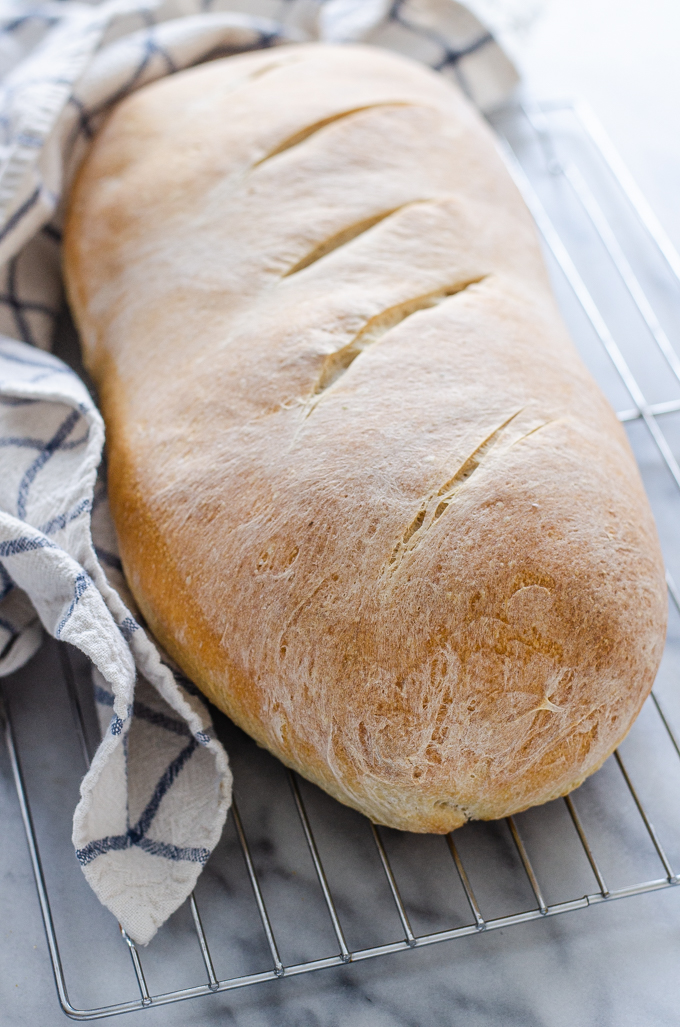
Allow your beautiful loaf of soft sourdough French bread to cool completely (or as completely as you can) on a wire cooling rack.
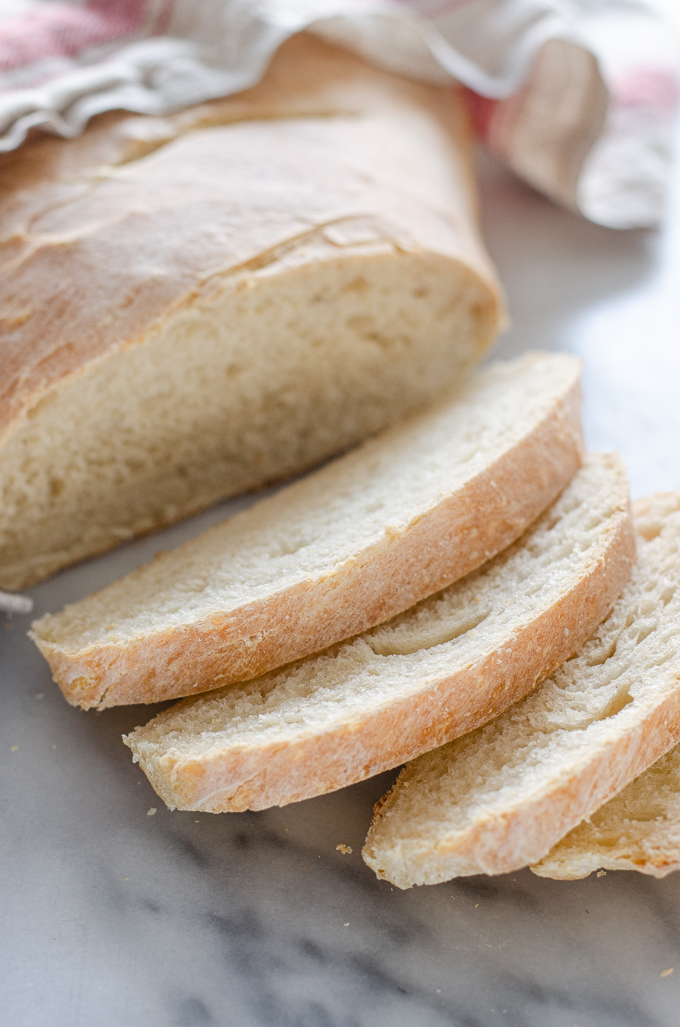
THEN it’s safe to slice it up! I like to slice it on the bias…somehow it makes me feel fancy…?
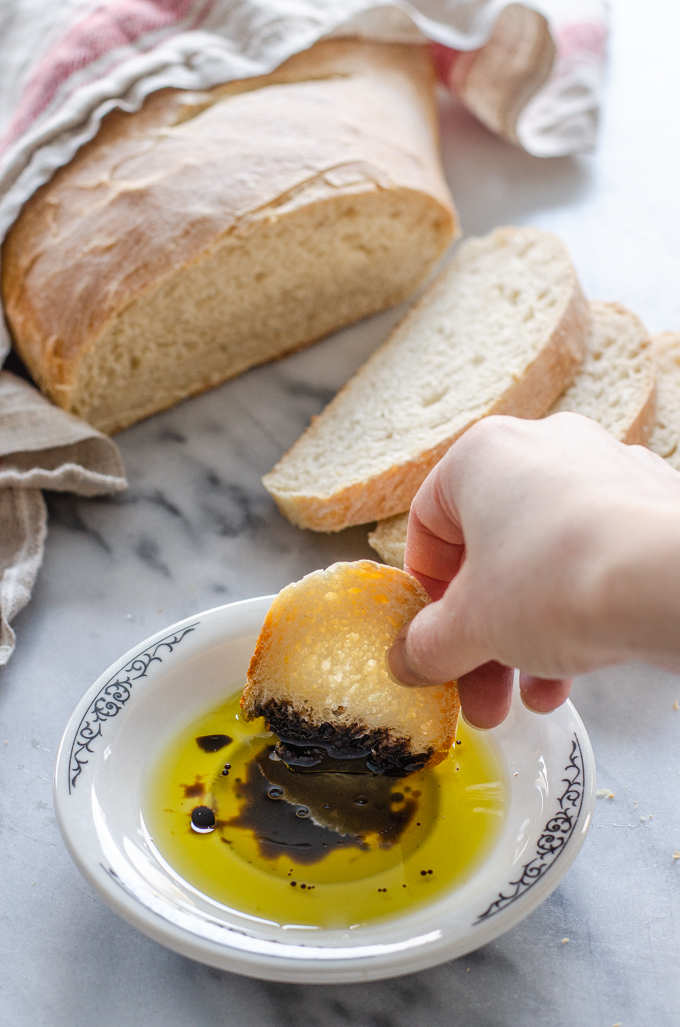

Now, besides using this soft sourdough French bread for a bruschetta potluck, it’s also delicious dipped in olive oil and balsamic vinegar.
What’s YOUR favorite way to eat French bread?
More Sourdough Recipes:
- Sourdough Pull Apart Rolls
- Sourdough Sandwich Bread
- How to Make Artisan Sourdough Bread
- Overnight Sourdough Waffles
- Sourdough Dutch Baby/German Pancake
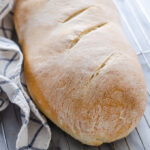
Soft Sourdough French Bread
This loaf of sourdough French bread has no yeast and is delightfully tangy.
Ingredients
- 1 cup water, 215 grams
- 1 cup active sourdough starter, 240 grams
- 3 1/2 cups organic all-purpose flour, 470 grams
- 1 tbsp raw honey
- 2 tsp unrefined sea salt, 11 grams
- 2 tbsp olive oil, 18 grams
- extra olive oil, for work surface
Instructions
Mixing the Dough + First Rise
-
Place all of the dough ingredients in the bowl of a stand mixer. Briefly mix with a spatula or wooden spoon to form a shaggy dough. Attach to the base of the stand mixer and fit with the dough hook. Knead on medium-low speed for 15 minutes. The dough should be quite soft, but clean the sides of the bowl. You can add more flour if the dough seems very wet, but err on the side of wet rather than dry!

-
Transfer the dough to a well greased, large bowl, turning once to grease the top of the dough. Cover and allow to rise at room temperature until doubled, about 8-12 hours.

Forming the Loaf
-
Grease your work surface. Plop the dough out onto it and gently pat it out to a rectangle. Grab the far edge of the dough and stretch it up and over to the middle of the dough. Use the side of your hand to press the edge of the fold in place. Repeat the stretching, folding, and pressing steps with the bottom edge, left edge, and right edge. Repeat once more with the top and bottom edges. Pinch the seam to seal well.

-
Flip the dough over and use your hands to push the edges of the dough under itself, creating even more surface tension. Pinch the ends of the loaf to seal.

Second Rise
-
Place the loaf on a parchment lined baking sheet. Cover with a tea towel and allow to rise in a warm spot until doubled. This can take anywhere from 4-8 hours, depending on how warm your kitchen is.

Baking the Loaf
-
About half an hour before the loaf is done rising, preheat your oven to 450°F. Slash the loaf with a razor blade, lame, or serrated knife. Bake in preheated oven for 25-30 minutes, or until deep golden.

-
Transfer to a wire cooling rack. Allow to cool completely before slicing + enjoying!
Recipe Notes
Heavily adapted from Butter For All.

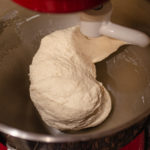
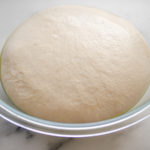
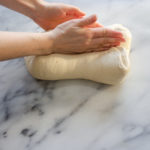
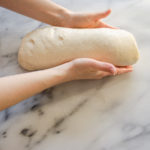
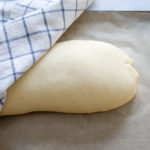
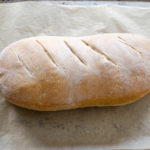
Barb
Saturday 27th of January 2024
Love this recipe! I just got my grain mill & want to try with fresh milled flour! Anyone try this yet? Thank you!
Barb
Thursday 4th of January 2024
I’ve made this 4 times & it’s delicious! This last time I cut dough in half to make two small loaves. Baked at 435 convection oven on a pizza stone checked at 15 min they were done in about 24 minutes. Excellent! This is my go to bread! Thank you!
Barb
Thursday 14th of December 2023
I am making my second loaf now! My first loaf was got brown at 20 minutes. My oven runs hot & I used convection setting. The bread was very good still. This loaf I am baking at 425 check at 15 minutes. Question, did you use a cornstarch wash on the one in the photo? Will post how this one turns out!
Denise
Sunday 5th of November 2023
Very tasty loaf. This may just be me new favorite bread to make sandwiches! I used about 80 gr of whole grain flour. I did lower the oven temperature to 375 after 10 min and baked for about 40 min. Thanks for posting!
Nava
Monday 18th of April 2022
I've made this recipe dozens of times with various flour combinations and it always turns out well. I don't have a mixer, but I've not found that it requires kneading at all. I just mix the ingredients together and leave it. I think the long rise time allows the gluten to develop, not sure about the science, but it works as a no-knead recipe - thought I'd share that.